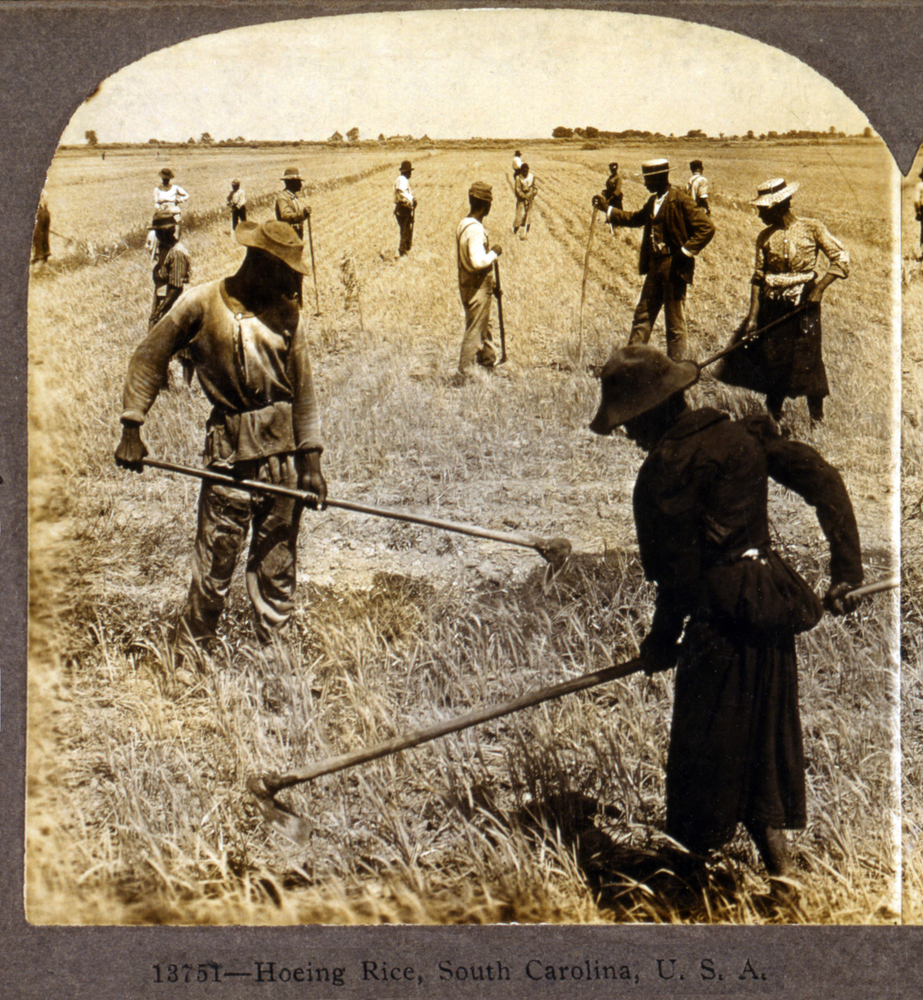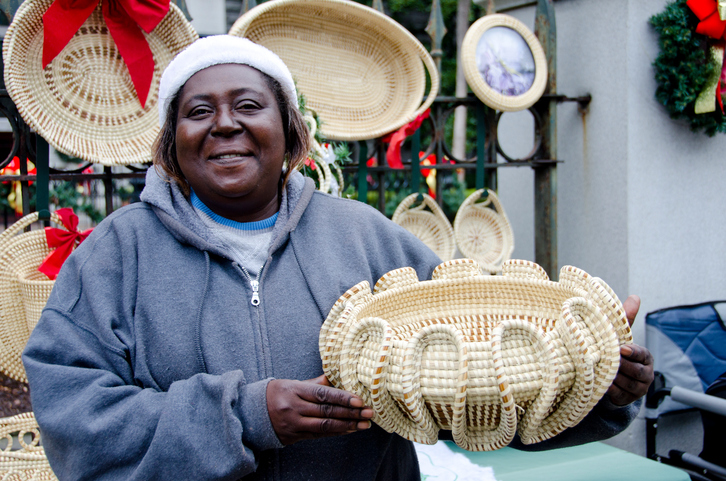.png)
The sea islands of Charleston – including property on Kiawah, Seabrook, and Johns Island – are modernly known for prestigious beaches, tony topography, and private residences. However, as the good Gullah people frequently say, “Cumya can’t tell binya,” which simply means those who have come here (cumya) can’t tell those who have  been here (binya) how to live. The spirit, knowledge, and heritage of the coastal land largely belong to the Gullah natives, a group of African Americans who originated from West Africa and were enslaved and specifically brought to the South Carolina coast in the 1700s because of their knowledge of planting rice. As a colony, South Carolina benefited from the Gullah slaves’ success with rice crops and, as a result, became one of wealthiest thirteen colonies. A close knit community, the Gullah, or “Geechie” people had more freedom than other groups of slaves simply because white plantation owners could not deal with the sweltering summer heat and maddening mosquitoes. Furthermore, owners relied on the Gullah people to teach them how to properly grow crops in a coastal environment. Ironically, the slaves were the masters of the craft and the masters were the students. After emancipation, many of the Gullah descendants opted to stay in the Lowcountry, thus gifting South Carolina with a rich cultural heritage.
been here (binya) how to live. The spirit, knowledge, and heritage of the coastal land largely belong to the Gullah natives, a group of African Americans who originated from West Africa and were enslaved and specifically brought to the South Carolina coast in the 1700s because of their knowledge of planting rice. As a colony, South Carolina benefited from the Gullah slaves’ success with rice crops and, as a result, became one of wealthiest thirteen colonies. A close knit community, the Gullah, or “Geechie” people had more freedom than other groups of slaves simply because white plantation owners could not deal with the sweltering summer heat and maddening mosquitoes. Furthermore, owners relied on the Gullah people to teach them how to properly grow crops in a coastal environment. Ironically, the slaves were the masters of the craft and the masters were the students. After emancipation, many of the Gullah descendants opted to stay in the Lowcountry, thus gifting South Carolina with a rich cultural heritage.
Today, the Gullah tribe and traditions still actively permeate the real estate in Mt. Pleasant, Charleston, Kiawah, Seabrook, and Johns Island. From familiar  spiritual songs to African-inspired dances to delicious home-made stews, the Gullah descendants proudly protect their heritage and invite residents and visitors alike to celebrate it with them. As an example, locals and tourists tarry off the trail to get their soul food fix at authentic Charleston Gullah restaurants such as Bertha’s Kitchen on Meeting Street, Hannibal’s Kitchen on Blake Street (near Trident Tech Palmer Campus), and Martha Lou’s Kitchen on Morrison Drive. No surprise, these restaurants – along with other area Gullah restaurants – are growing in popularity. The New York Times recently featured Martha Lou’s restaurant in an article, which subsequently has generated more traffic in her restaurant. At 85 years young, Martha Lou is still the one in charge of the kitchen and serves classic Gullah dishes such as okra stew, chittlings, and bread pudding (Giddick 2015).
spiritual songs to African-inspired dances to delicious home-made stews, the Gullah descendants proudly protect their heritage and invite residents and visitors alike to celebrate it with them. As an example, locals and tourists tarry off the trail to get their soul food fix at authentic Charleston Gullah restaurants such as Bertha’s Kitchen on Meeting Street, Hannibal’s Kitchen on Blake Street (near Trident Tech Palmer Campus), and Martha Lou’s Kitchen on Morrison Drive. No surprise, these restaurants – along with other area Gullah restaurants – are growing in popularity. The New York Times recently featured Martha Lou’s restaurant in an article, which subsequently has generated more traffic in her restaurant. At 85 years young, Martha Lou is still the one in charge of the kitchen and serves classic Gullah dishes such as okra stew, chittlings, and bread pudding (Giddick 2015).

Apart from soul food and songs, many folks long for a Charleston sweetgrass basket, which are hand-made by Gullah/Geechie descendants. Like folklore, the art of basket-weaving is passed down from generation to generation and is a revered skill. The baskets are sturdy enough to hold work boots and crops but majestic enough to display as décor in many lowcountry homes. Though historically the Gullah men made the baskets out of bulrush for use on the plantation or for extra income, after emancipation, the women began to carefully create smaller sweetgrass baskets to hold fruits and vegetables. Today, Mt. Pleasant is the mecca of Charleston sweetgrass basketry, with several stands alongside Highway 17 North. Basket booths are also found at the market in downtown Charleston and along scenic Highway 61 towards Kiawah and Seabrook islands. The family of the late Mary Vanderhorst, a well-known sweetgrass basket artisan in Mt. Pleasant, offers a wide variety of baskets available for purchase online at www.charlestonbaskets.com. Prices range from $40 for a drink coaster to more than $6,000 for a custom piece. The baskets are not only functional but also excrete a subtle, sweet scent, which naturally freshens the indoor air.

From economic notoriety because of the rice crops to the introduction of soul food stews to the glorious art of basketry, Charleston is not Charleston without the contributions of the Gullah/Geechie nation. So whether buying real estate on Kiawah or Seabrook Islands or just visiting the historical sites around the Lowcountry, take time to salute the “binyas”; for their traditions transcend modern time.
References:
Giddick, Kinsley. “Your Guide to Tracking Down the Best Gullah Eats.” Charleston City Paper (2015).
Web. 6 July 2016
Jackson, Ramon. “Gullah Traditions: Origin and Practices.” Charleston’s African American Heritage.
Charleston CVB. Web. 6 July 2016.

Posted on Wednesday, December 13th, 2017 at 3:19pm.